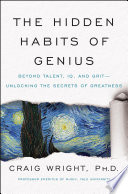

Curiosity is often the foundation of genius. It drives individuals to explore, question, and seek deeper understanding. The book emphasizes that geniuses possess an insatiable desire to learn and discover. They ask questions that go beyond surface-level understanding and pursue knowledge across various disciplines. This multifaceted approach allows them to draw connections between disparate ideas, leading to innovative solutions. Cultivating curiosity can be a transformative habit for anyone looking to enhance their creative problem-solving skills.
Continue readingFailure is not just a setback but a crucial component of the genius mindset. The book illustrates that many brilliant minds have experienced significant failures before achieving success. These experiences teach resilience and provide valuable lessons that contribute to future successes. The ability to embrace failure and learn from it is a habit that separates geniuses from others. By reframing failure as a stepping stone rather than an endpoint, individuals can foster a growth mindset that encourages experimentation and innovation.
Continue readingPlay is often overlooked in serious pursuits, but it is a vital habit of genius. The book highlights how playfulness fosters creativity and encourages exploration without the fear of judgment. Engaging in playful activities allows the mind to wander, leading to unexpected insights and breakthroughs. Geniuses often incorporate play into their routines, whether through artistic endeavors, games, or imaginative thinking exercises. This habit not only relieves stress but also stimulates cognitive flexibility, making it easier to approach problems from different angles.
Continue readingGenius is not solely about innate talent; it is also about perseverance. The book emphasizes that many successful individuals exhibit extraordinary levels of persistence and grit. They continue to pursue their goals despite obstacles and setbacks. This habit of relentless determination enables them to overcome challenges that might deter others. The narrative encourages readers to develop their own grit by setting long-term goals and maintaining focus, even when faced with difficulties. The journey of persistence often leads to mastery and innovation.
Continue readingGenius does not thrive in isolation. The book stresses the importance of collaboration and building a supportive community. Geniuses often surround themselves with diverse thinkers, exchanging ideas and perspectives that enrich their own understanding. This habit of seeking out collaboration can lead to collective genius, where the sum of contributions exceeds individual efforts. The narrative encourages readers to cultivate relationships with mentors, peers, and collaborators, fostering an environment where creative ideas can flourish.
Continue readingMindfulness and reflection are critical habits that allow geniuses to process their experiences and insights. The book discusses how taking time for introspection can lead to greater clarity and understanding of one’s thoughts and emotions. Mindfulness practices, such as meditation or journaling, help individuals to focus and harness their mental energy effectively. This habit not only enhances self-awareness but also encourages deeper engagement with the creative process, enabling geniuses to refine their ideas and approaches.
Continue readingGeniuses often have a wide range of interests and experiences that inform their thinking. The book highlights that exposure to different fields, cultures, and ideas can enhance creativity and innovation. This habit of seeking diverse experiences allows individuals to draw from a rich tapestry of knowledge, leading to unique insights and solutions. The narrative encourages readers to step outside their comfort zones, explore new hobbies, and engage with different communities to broaden their perspectives and fuel their creative endeavors.
Continue reading